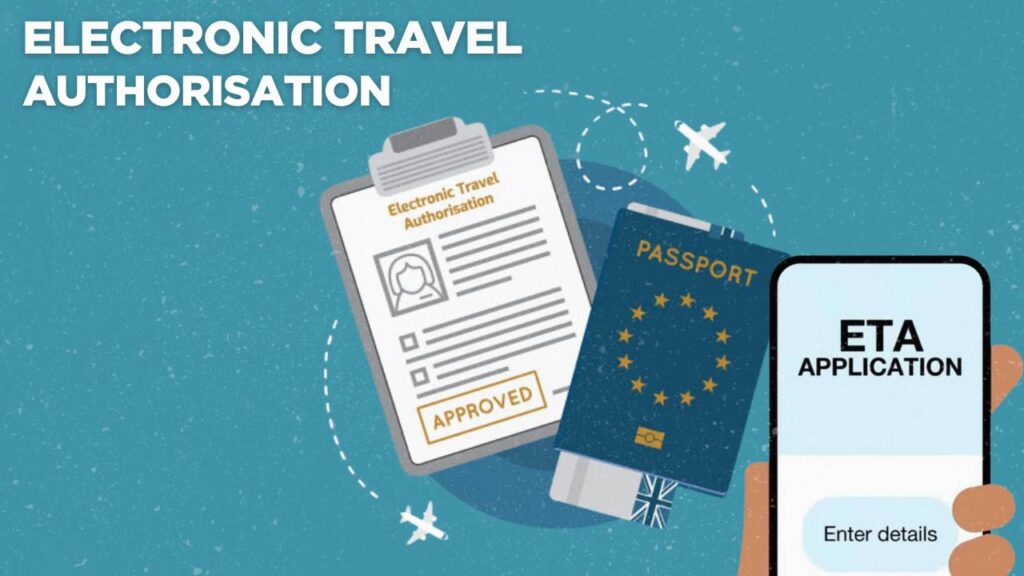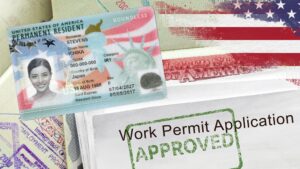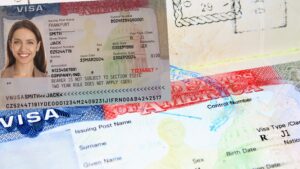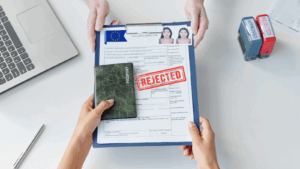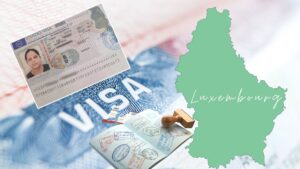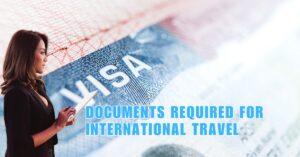In today’s digital era, travel has evolved beyond just booking a flight and packing a suitcase. As global mobility rises, so does the need for secure, efficient border control systems. One such innovation adopted by many countries is the Electronic Travel Authorisation (ETA)—a digital travel requirement that allows visa-exempt nationals to pre-register before entering a foreign country. For travelers in 2025 and beyond, understanding ETA regulations is essential for avoiding last-minute travel issues, denied boarding, or entry refusals.
Here, everything you need to know about Electronic Travel Authorisation, including what it is, how it works, the countries that use it, application procedures, eligibility criteria, costs, and validity.
What is Electronic Travel Authorisation
An Electronic Travel Authorisation (ETA) is a digital pre-clearance that travelers must obtain before entering certain countries. It’s not a visa, but rather a travel screening tool that allows governments to pre-approve visitors based on security, health, and immigration risk factors.
Governments use ETAs to screen travelers before arrival, which helps streamline border entry processes and identify any red flags in advance. The system digitally links the authorisation to your passport, eliminating the need for stamps or physical documents. ETAs are generally quick to process and easy to obtain online, making them ideal for tourists, business travelers, and those in transit.
Countries like Canada (eTA), Australia (ETA), New Zealand (NZeTA), Sri Lanka, and the UK (rolling out UK ETA by late 2025) actively use this system to reduce paperwork, speed up airport entry, and enhance national security.
ETA Application Process: How It Works
Applying for an ETA is a straightforward process, but you must pay close attention to accuracy to avoid rejections or delays. Here’s how it works:
1. Check Your Eligibility
First, confirm whether your country qualifies for the ETA of your chosen destination. Immigration websites list the eligible nationalities. Some travelers, even from developed countries, may still need a visa depending on the purpose of the visit or bilateral agreements.
2. Use the Official Government Portal
Always apply through the official ETA application portal of the destination country. These portals often end in “.gov” or are linked from embassy websites. Avoid unofficial agents or third-party services that charge inflated fees or may not be secure.
3. Complete the Application Form
You’ll need to provide personal details like full name, date of birth, gender, nationality, travel purpose, passport number, and travel dates. Double-check that your information exactly matches your passport, including spelling and sequence.
4. Upload Required Documents
Most applications require a clear scan of your passport’s bio page. Depending on the destination, you may also need to upload a passport-size photo, hotel reservation, travel itinerary, return ticket, or financial proof.
5. Answer Health & Security Questions
Expect to answer questions about your criminal history, past visa refusals, deportations, or recent travel to restricted regions or disease hotspots. Be honest—false answers can lead to long-term entry bans.
6. Pay the ETA Fee
Use a debit or credit card to pay the application fee. Many portals support international cards (Visa, MasterCard, AmEx). If the transaction fails, try a different card or contact your bank to enable international purchases.
7. Wait for Approval
Most applications receive a decision within minutes, but some may take up to 72 hours for further checks. Apply at least a week before your flight to avoid stress or last-minute denial.
8. Save or Print the ETA
Once approved, you’ll receive an email confirmation. Although the ETA links electronically to your passport, always print or download a copy. Airlines may ask for proof at check-in, and system failures can occur.
ETA Requirements by Country: A Traveler’s Guide
ETA requirements vary depending on the traveler’s nationality and the host country’s policies. Here’s a breakdown of what different passport holders typically need:
U.S. Citizens
U.S. passport holders can travel to countries like Canada, Australia, New Zealand, South Korea, and the UK (2025) using ETA systems. Your passport must be valid for at least 6 months beyond your entry date. Authorities may also ask for proof of return ticket, accommodation, and a clean immigration or criminal history.
European Union Citizens
EU citizens, including those from Germany, France, Italy, and Spain, enjoy visa-free access to many countries but still require an ETA in places like Canada and New Zealand. You must hold a biometric passport and provide travel plans and sufficient funds during the ETA application.
Indian Citizens
Indian passport holders often need full visas, but can access ETA schemes in countries like Sri Lanka and South Korea (K-ETA). You must upload your passport, photograph, and may be asked to show hotel bookings, return tickets, and financial proof during the application.
Australian and New Zealand Citizens
Australians and New Zealanders often enjoy reciprocal visa-free agreements, but when traveling to countries like Canada or the upcoming UK ETA, they must apply. The process is quick, and applicants usually receive multi-entry approvals valid for tourism or business, but not for work or study.
Middle Eastern, African, and Asian Nationals
Travelers from countries like UAE, Qatar, Nigeria, Kenya, Malaysia, and Japan are increasingly offered e-visa or ETA options. Requirements may include health certificates, travel history, financial proof, and additional screening depending on political or security considerations.
ETA Costs in 2025: What to Expect
Compared to full visas, ETAs remain affordable and efficient. Prices vary by country but typically range from USD 5 to USD 30.
Estimated ETA Costs by Country (2025):
- Canada (eTA): CAD 7 (≈ USD 5) – Valid for 5 years
- Australia (ETA): AUD 20 (≈ USD 13) – Valid for 12 months, multiple entry
- New Zealand (NZeTA): NZD 17–23 (USD 10–14), plus IVL NZD 35 – Valid for 2 years
- Sri Lanka (ETA): USD 20–35, depending on category & urgency
- South Korea (K-ETA): KRW 10,000 (≈ USD 8) – Valid for 2 years
- United Kingdom (UK ETA): £10 (≈ USD 13), launching in late 2025, valid for 2 years
Warning: Apply only via official government portals to avoid fraud or overcharging. Some unofficial websites charge 5–10x more than the official fee and may not even guarantee a valid ETA.
How to Apply for an ETA: Step-by-Step Guide
Applying for an ETA is easy if you’re prepared. Follow these steps:
1. Visit the Official Immigration Website
Access your destination’s government immigration site. Look for official URLs like .gov or embassy links. Never share passport details on unverified platforms.
2. Fill in the Online Application
Enter your name, passport number, birth date, gender, travel dates, and purpose of visit. Ensure accuracy, as even a small error could lead to rejection.
3. Upload All Required Documents
Upload a digital copy of your passport, a passport-sized photo, and any other requested documents like hotel reservations, return tickets, or financial statements.
4. Make Payment Securely
Pay the ETA fee with a valid credit or debit card. If you face technical errors, try a different card or reach out to the ETA helpline or embassy for guidance.
5. Track and Save Your ETA
Most approvals arrive within minutes, but high-risk travelers may experience delays. Once approved, save or print the ETA email confirmation and carry it with you during your journey.
ETA Validity Periods: How Long Can You Stay?
The duration and number of entries permitted under an ETA vary by country. Some allow multiple short visits, while others permit longer stays over several years.
Examples of ETA Validity in 2025:
- Canada (eTA): Valid for 5 years or until passport expiry. Multiple entries of up to 6 months each.
- Australia (ETA): Valid for 12 months, multiple entries. Each visit capped at 90 days.
- New Zealand (NZeTA): Valid for 2 years, allows 90-day visits per entry.
- South Korea (K-ETA): Valid for 2 years, suitable for short business or tourist visits.
- UK ETA (2025): Expected to last 2 years, with multiple entries of up to 6 months each.
Note: Always verify entry conditions, as validity doesn’t equal length of stay. Overstaying can lead to fines, bans, or future travel restrictions.
By staying updated and applying correctly, you can save time, avoid airport hassles, and ensure a smooth, stress-free entry into your chosen destination.
FAQs
1. What is an Electronic Travel Authorisation (ETA)?
An ETA is a digital travel pre-clearance that allows eligible travelers to enter certain countries without applying for a traditional visa. It’s linked electronically to your passport and is required before boarding a flight to the destination.
2. Is an ETA the same as a visa?
No, an ETA is not a visa. It is a travel authorisation for short-term visits such as tourism, business, or transit. It doesn’t permit long-term stays, work, or study, which usually require a full visa.
3. Who needs an ETA?
Travelers from visa-exempt countries typically need an ETA to visit certain nations like Canada, Australia, New Zealand, South Korea, and the UK (by 2025). Always check if your nationality is eligible before booking travel.
4. How do I apply for an ETA?
You must apply online through the official immigration website of the destination country. The application involves filling out a form, uploading documents (like your passport), paying the fee, and waiting for approval.
5. What documents do I need to apply for an ETA?
Most ETA applications require:
- A valid passport
- A passport-sized photo (some countries)
- Credit/debit card for payment
- Travel itinerary (optional but helpful)
- Answers to security and health questions
6. How long does it take to get an ETA approved?
In most cases, ETA approval is instant or within a few hours. Some applications may take up to 72 hours if additional screening is required. It’s best to apply at least a week before your trip.
7. How long is an ETA valid?
Validity periods vary by country. For example:
- Canada: 5 years
- Australia: 12 months
- New Zealand: 2 years
- UK (2025): 2 years
Each visit has a maximum allowed stay (usually 30 to 180 days).
8. Can I work or study with an ETA?
No, an ETA is for short visits only, such as tourism, business meetings, or transit. If you plan to study, work, or immigrate, you must apply for the appropriate visa through the country’s consulate or immigration office.
9. What happens if my ETA application is denied?
If your ETA is denied, you cannot board your flight. You may need to apply for a full visa through the nearest consulate or embassy. Check the reason for denial and ensure your passport, travel history, and documents are in order.
10. Do I need to print my ETA approval?
While most ETAs are linked electronically to your passport, it’s highly recommended that you print or save a digital copy of your approval email. Some airlines and immigration officers may ask for proof before boarding or at arrival.
